Each year, we come across a variety of colourful, intriguing and exciting images that illustrate the fantastic research being done by physicists worldwide. In fact, the images are so fascinating that we do an “Image of the day” post on Physics World‘s Facebook page every day. Below are 10 of our favourite images from 2013 – from spiky nano-tubes to ancient light that has travelled for more than nine billion light-years to reach us. These awe-inspiring images that span across all of physics and we hope you enjoy them

Shape-shifting metal has a long memory
The colourful ribbons in the micrograph pictured above show a new alloy developed by researchers in the US that, once deformed, will automatically return to its original shape when heated. “Shape-memory” alloys are reversible phase-change materials that can exist in two crystal-lattice structures: one that is more stable above a certain transition temperature and the other favoured at lower temperatures. The picture shows the meandering patterns of its domain boundaries that form and change as the metal morphs. The snaking boundaries led the researchers to jokingly christen the new structure “riverine”. While this is not the first such shape-memory metal, the latest material can go through 16,000 shape-shifting cycles without significant degradation – making it far more robust than existing materials.
Sensitive fingerprint technique developed with the help of neutrons
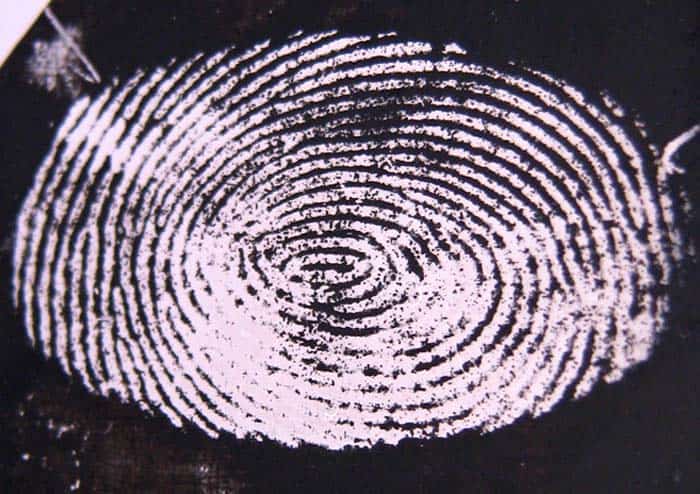
The odds that two people will have identical fingerprints is about 64 billion to 1, which is why law-enforcement agencies rely on fingerprint evidence. But often, more than 90% of crime-scene fingerprint images are not of good enough quality to clearly identify an individual. In July this year, researchers in the UK and France developed a new and extremely sensitive method for visualizing fingerprints left on metal surfaces such as guns, knives and bullet casings. The technique utilizes colour-changing fluorescent films and can be used to complement existing forensic processes. Above is the image of a fingerprint left on stainless steel that has been enhanced by electrodeposition. The light regions are stainless steel that is protected by the sweat residue that was laid on top. The dark regions are the polymer in between the fingerprint sweat without the fluorescence switched on.
Astronomers discover furthest gravitational lens

In case you were wondering why the image above is a bit blurry, you will have to forgive the Hubble Space Telescope – it is not easy to capture light that has travelled from when the universe was still young and only a fraction of its current age. The fiery ring you see above is the most distant gravitational lens seen to date and it is at a colossal distance of 9.4 billion light-years from us. The chance discovery was made by an international team of astronomers and it not only allowed the researchers to directly measure the mass of the distant galaxy that caused the lensing, but has also led to questions about the more distant object (which is an even more impressive 11 billion light-years away) the light from which was lensed. The magnified object is a type of dwarf galaxy that is thought to be rare. The chances that such a peculiar galaxy would be gravitationally lensed are small and its observation suggests that current theories have underestimated the number of such galaxies in the early universe.
Physicists discover key to ultra-stable bearings
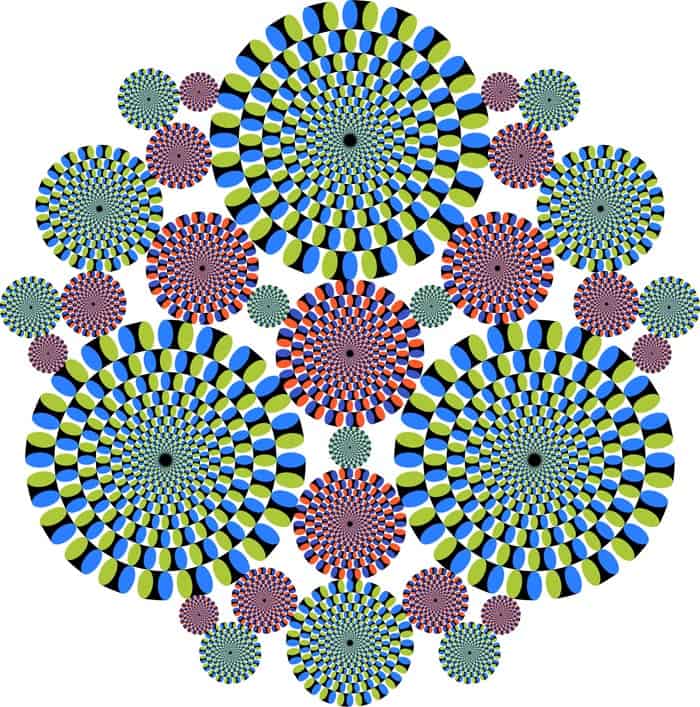
The psychedelic illusory-motion illustration above had all of us at Physics World dizzy. The image, which is adapted from the “Rotating Snakes” visual illusion created by Akiyoshi Kitaoka, is a 2D space-filling bearing configuration with 31 rotor discs that was studied by a team of physicists based in Switzerland and Brazil. The researchers were investigating a “2D space-filling bearing”, which consists of a hierarchical distribution of successively smaller rotating 2D discs nestled into the spaces between larger ones. Surprisingly, the team found that such networks of rotating bearings can recover more easily from perturbations to their harmonious motion if the masses of the individual discs are proportional to their radii.
Getting to the bottom of foamy physics
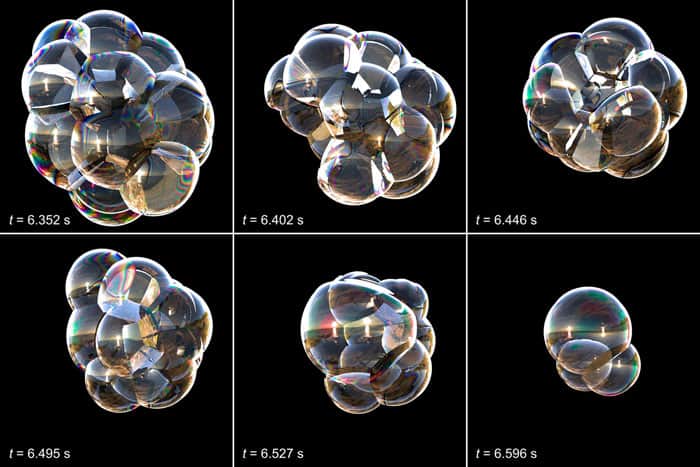
Two physicists in the US have been frothing with excitement at having created a new mathematical model to describe the complex evolution of foamy bubbles – something that has proved fiendishly difficult to model thanks to the hugely varying length and timescales involved. The researchers separated the various processes that determine the evolution of foam according to the different length and timescales at which they occur, and have created a model for bulk foam dynamics. The duo also developed a set of equations, which the researchers used to create a movie that simulates how light would reflect off a small foam sample as its bubbles rearrange. The image above consists of snapshots from the movie – the researchers picked a “beach scene” as a backdrop so that they could visualize how well their model replicates what would be seen in real life.
Redefining temperature
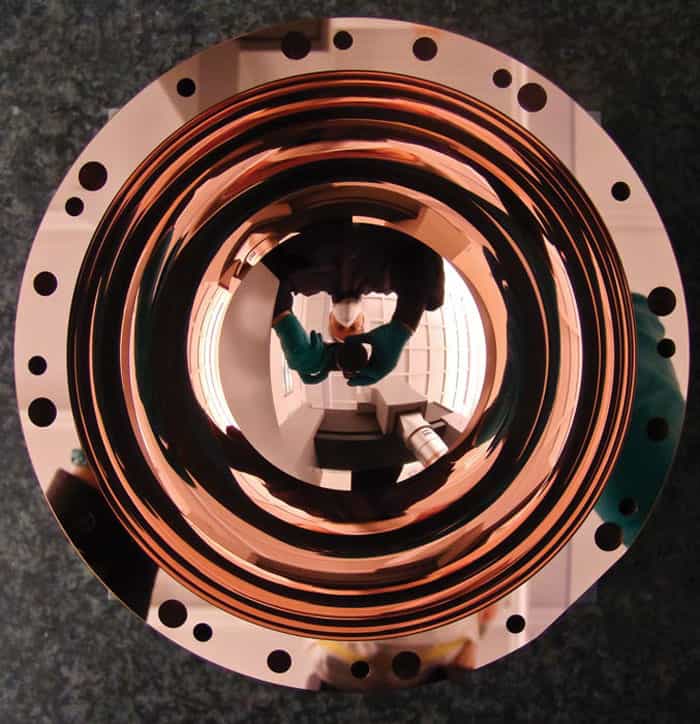
2013 is the year when Oxford Dictionaries chose “selfie” as its word of the year. In light of that, we could not resist including this rather excellent selfie of researcher Michael de Podesta, from the National Physical Laboratory in the UK, who recounts the six-year experiment where he and his colleagues have made the most accurate measurement yet of the Boltzman constant – a result that will help redefine the kelvin. De Podesta’s image above – which shows him photographing himself in one half of a nearly spherical resonator used to measure the Boltzmann constant – even made the August cover of print edition of Physics World. In case you were wondering, the team’s new estimate of kB is 1.380 651 56 (98) × 10–23 J K–1, where the (98) represents the uncertainty in the last two digits.
How to hear the shape of a room
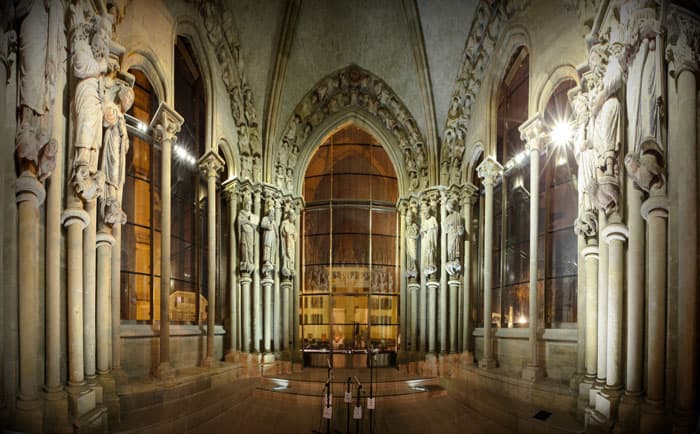
A quick glance at the image above might leave you wondering where exactly the physics comes into play. But look close and you will notice the four microphones placed in the centre of the magnificent Lausanne Cathedral. This is part of the set-up of an international team of researchers that was studying how the shape of a room could be determined simply by making a sound and listening to the corresponding echoes. The team developed an algorithm that uses sound to work out the dimensions of any room with flat, protrusion-free walls. The system comprises a single loudspeaker to create the sound and four microphones placed anywhere in the room to capture the echoes. The algorithm examines the sounds recorded by the four microphones together and works out which come from the same wall. The size and shape of the room can then be calculated from the arrival time at each microphone of all the first-order echoes. In fact, the researchers’ algorithm worked so well that they were able to use it to determine the cathedral’s dimensions – a large space that has a domed ceiling and numerous protrusions such as pillars and large statues, and is in no way flat!
Brownian boomerangs head in the right direction
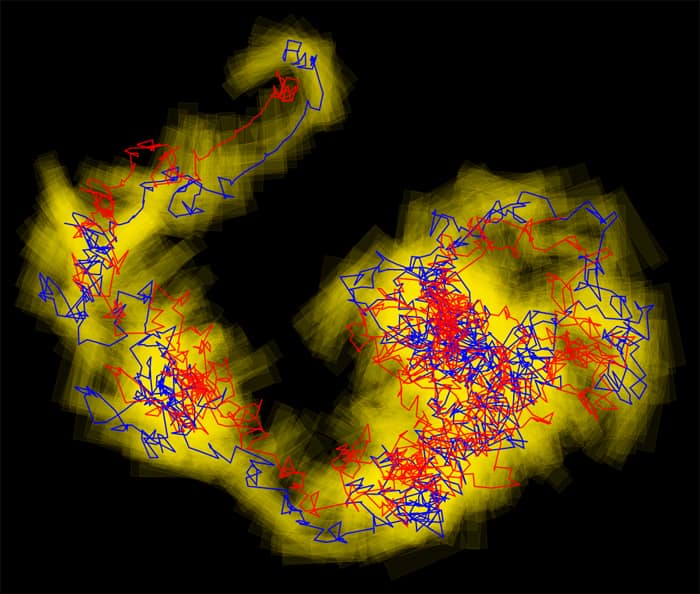
The bright and abstract colours you see above may seem like modern art, but the image actually shows tiny boomerang-shaped colloidal particles whizzing about in water. An international team of researchers found that particles that are clearly non-spherical – such as a boomerang-shaped particle – show a preferred direction of motion, at least initially. The researchers studied the boomerang’s Brownian motion using a video camera and their observations showed that, for the first minute, each of the boomerangs moved in the direction of a line bisecting its arms. The image above depicts the trajectory of a boomerang particle in water. Starting from the top of the image, the blue line tracks the point at the base of the boomerang where the arms meet and the red line tracks the “centre of hydrodynamic stress” – a point along the axis bisecting the angle of the arms. The boomerang itself is shown in yellow.
Glass-blowing at the nanoscale
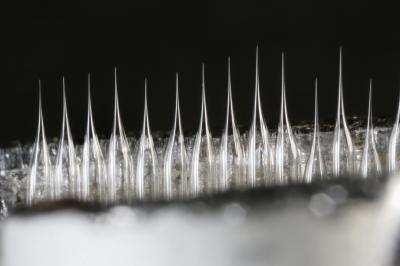
From the Romans to the studio artists of today, glass blowing is as much an art form as it is a technical discipline. In the same spirit as this creative lineage, a group of researchers in Switzerland has invented a technique for creating nano-sized capillary tubes of bespoke sizes. In the image above you can see how the researchers alter the ends of ultrathin quartz tubes, from 200 nm to a few nanometres, by careful remoulding them using a scanning electron microscope. The technique could have industrial applications, including use in ultra-high-precision printers, as well as in medical applications.
Life in 3D
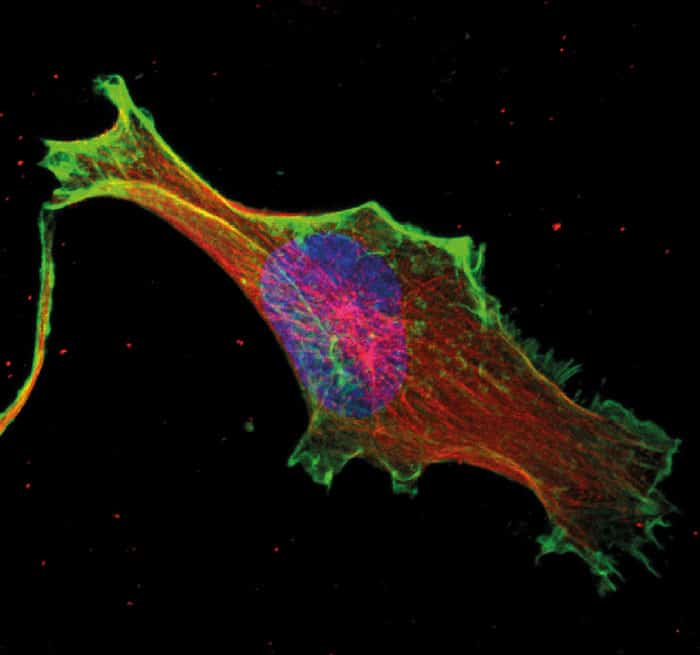
This year, our July magazine was a special issue that dealt with the “physics of cancer”, where we looked at the growing number of physicists who are looking at our fundamental understanding of cancer using physics. Cancer researchers used to look at cells under the microscope by mounting them onto glass slides – a 2D environment. But now that they realize that the physical environment significantly affects the behaviour of cancer cells, scientists are looking again at the properties of cancer cells, this time suspended in 3D gel-like environments that more closely resemble the physical environment within the human body. Previous studies have shown that cells move in 2D using protein clusters known as focal adhesions, and it had been widely assumed that the 2D results translate to 3D. However, this confocal-microscopy image from their lab shows a human cancer cell within a 3D matrix of collagen using an altogether different mechanism: several cell-membrane protrusions known as pseudopodia (green) probe their surroundings before selecting and pulling on a collagen fibre, a process repeated in quick succession that allows the cell to move through its 3D environment. You can see more images and find out about what else physicists are doing to tackle cancer by downloading a free PDF version of the magazine.



